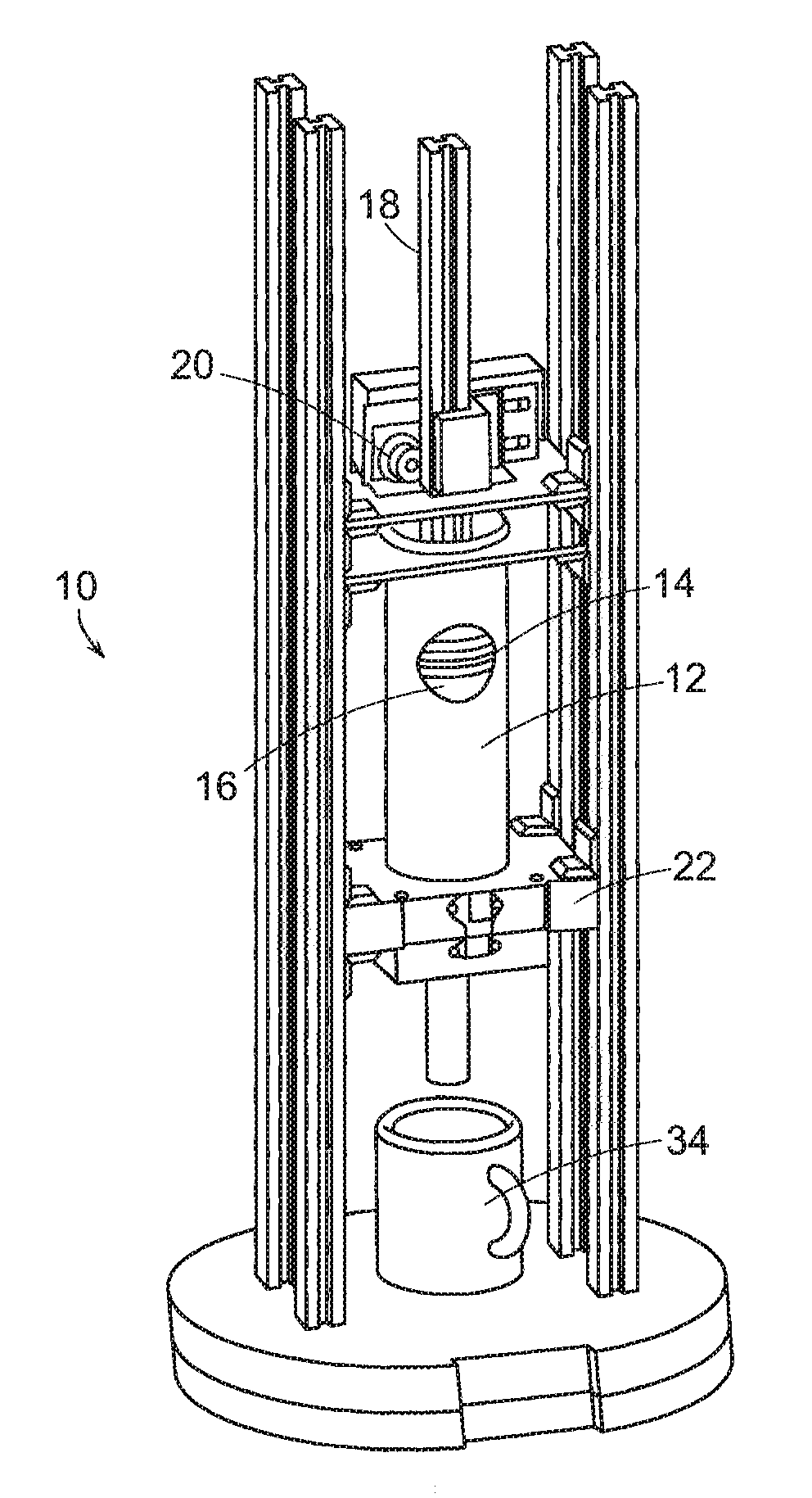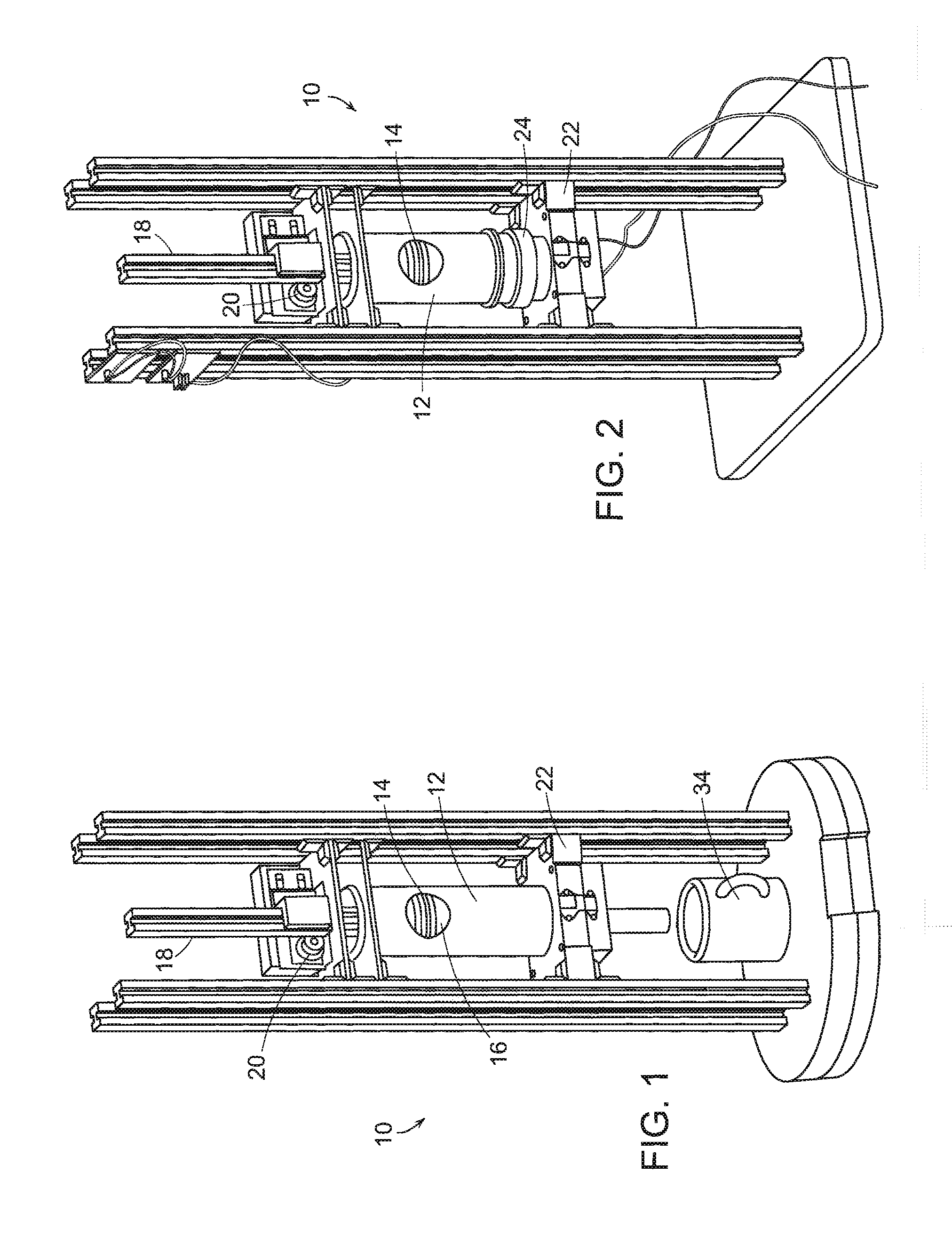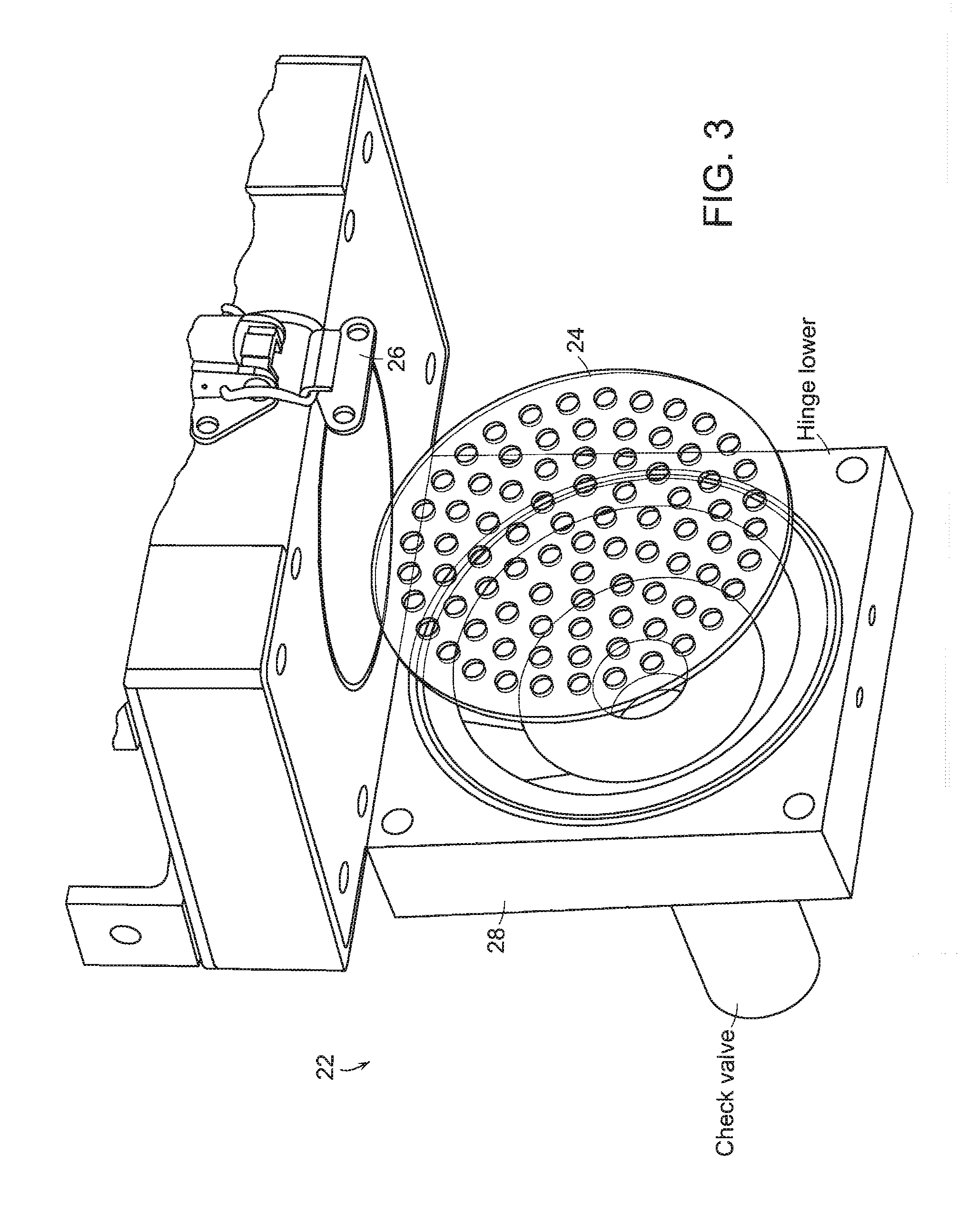Brewing system
- Summary
- Abstract
- Description
- Claims
- Application Information
AI Technical Summary
Benefits of technology
Problems solved by technology
Method used
Image
Examples
Embodiment Construction
[0015]With reference first to FIGS. 1 and 2 the brewing system 10 includes a vertically disposed cylinder 12 that forms a brewing chamber therein and includes an opening 14 through which ground coffee and water are introduced into the cylinder 12. A plunger 16 shown within the opening 14 is supported for movement within the cylinder 12. The plunger 16 is moved by the interaction of a gear rack 18 in combination with a pinion gear 20 driven by an electric motor. A thermocouple (not shown) is located within the cylinder 12 for immersion in the brewing water. A lower hinge / filter assembly 22 allows the coffee grounds to be removed after brewing is complete.
[0016]As shown in FIG. 2 a heating element 24 such as a heating pad is wrapped around the exterior of the cylinder 12 to provide for temperature control of the water during the brewing process. The cylinder 12 may be made of a plastic material, glass, or a metal such as stainless steel.
[0017]FIG. 3 shows the hinge / filter assembly 22 ...
PUM
 Login to View More
Login to View More Abstract
Description
Claims
Application Information
 Login to View More
Login to View More - R&D
- Intellectual Property
- Life Sciences
- Materials
- Tech Scout
- Unparalleled Data Quality
- Higher Quality Content
- 60% Fewer Hallucinations
Browse by: Latest US Patents, China's latest patents, Technical Efficacy Thesaurus, Application Domain, Technology Topic, Popular Technical Reports.
© 2025 PatSnap. All rights reserved.Legal|Privacy policy|Modern Slavery Act Transparency Statement|Sitemap|About US| Contact US: help@patsnap.com



